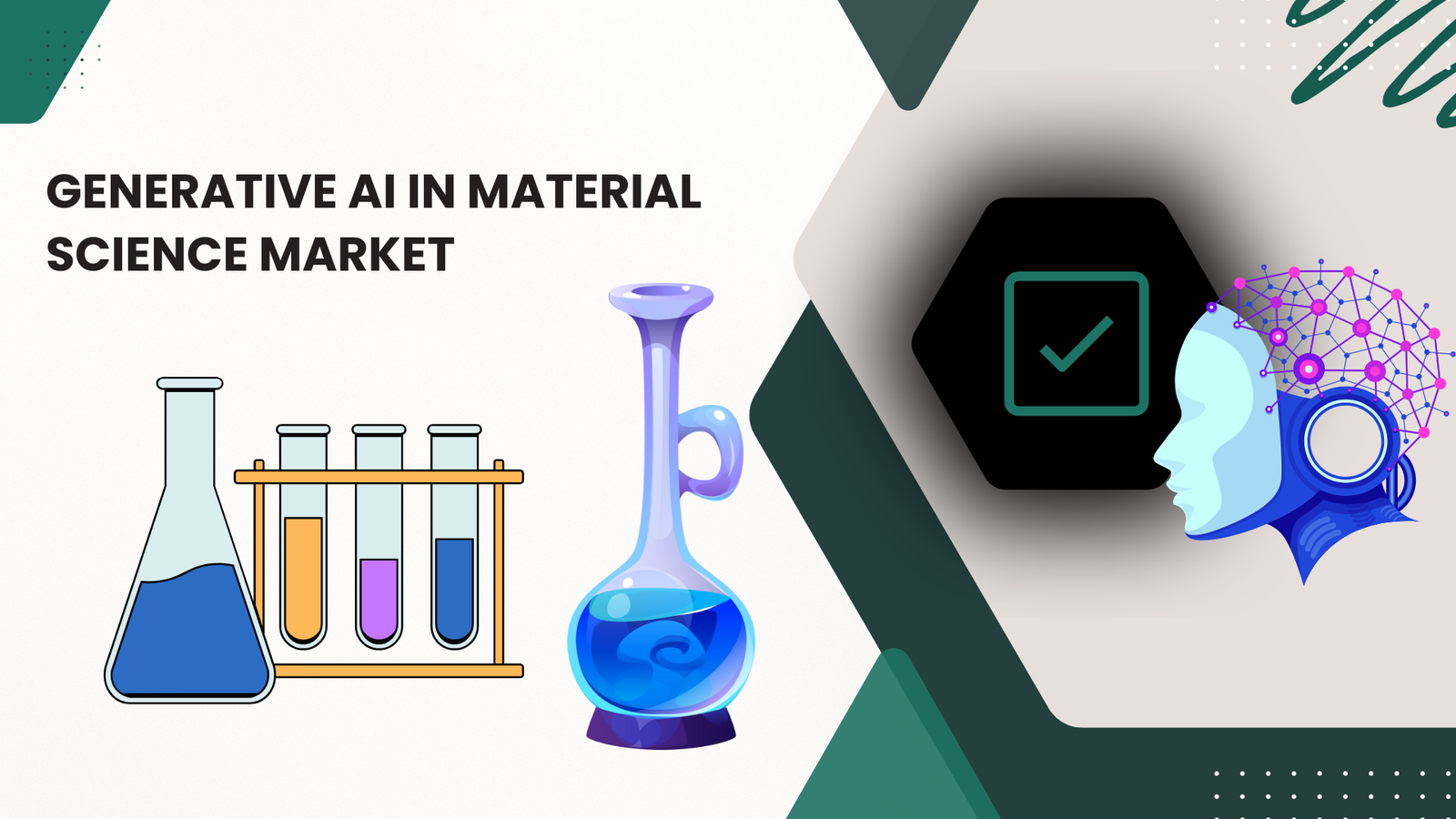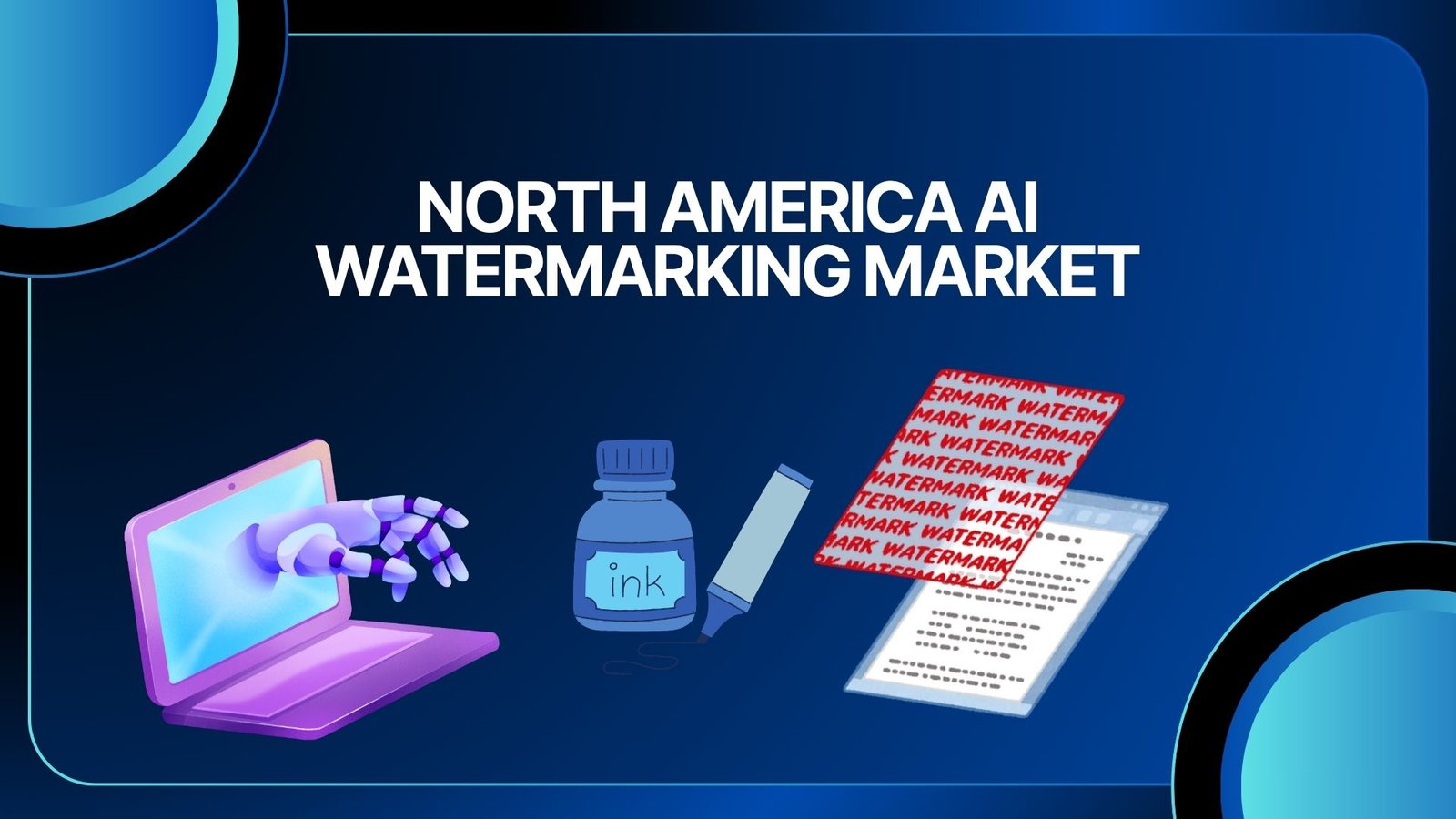Generative AI in Material Science Market to hit USD 11.7 Bn By 2034
Updated · Sep 16, 2025

WHAT WE HAVE ON THIS PAGE
Generative AI in Material Science Market Size
The global Generative AI in Material Science Market was valued at USD 1.1 billion in 2024 and is projected to reach nearly USD 11.7 billion by 2034, registering a strong CAGR of 26.4% between 2025 and 2034. The rapid adoption of generative AI for accelerating material discovery, optimizing design processes, and reducing R&D costs is driving this expansion across industries such as chemicals, pharmaceuticals, electronics, and energy.
Generative AI in material science refers to the use of advanced AI technologies that design and discover new materials by simulating molecular and atomic interactions. This approach enables researchers to predict material behaviors and generate new material candidates that can be tested experimentally, greatly speeding up the innovation process.
By reducing the time and cost associated with traditional trial-and-error methods, generative AI is making it possible to explore a vast range of chemical possibilities efficiently, which is especially important for industries like aerospace, automotive, and electronics that rely on advanced materials.

The top driving factors for the growth of generative AI in material science include the need to accelerate material development cycles and reduce costly physical experiments. Companies and researchers want to shorten development times while improving material performance and sustainability. This technology helps to optimize material properties such as durability, conductivity, and flexibility, enabling the creation of eco-friendly materials that reduce environmental impacts.
Key Takeaways
- The market for generative AI in material science is projected to rise from USD 1.1 billion in 2024 to USD 11.7 billion by 2034, growing at a 26.4% CAGR.
- North America led with over 36% share in 2024, generating nearly USD 0.3 billion, driven by strong tech presence and R&D investments.
- The Software segment dominated with 71% share in 2024, supported by the use of AI tools in simulations, predictive modeling, and analysis.
- Material Discovery held more than 40% share in 2024, as AI accelerated the identification of new and innovative materials.
- The Aerospace and Defense sector led with over 30% share in 2024, fueled by demand for lightweight and high-performance materials.
Analysts’ Viewpoint
The demand for generative AI is rising as leading-edge technologies such as machine learning, deep learning, and robotics become more integrated into materials research. AI-driven tools allow for complex simulations and rapid experimentation, making it feasible to design materials with specific, tailored properties.
These technological advances also improve the precision of material discovery processes, helping scientists develop materials faster than ever before. The adoption of cloud-based AI services further enhances collaboration and scale, making high-powered computing accessible for material science applications worldwide.
Key reasons for adopting generative AI include significant cost savings and accelerated research timelines. By predicting which material combinations are most promising, companies minimize waste and reduce expensive laboratory tests. AI also allows customization of materials to meet exact industry needs, offering competitive advantages in fields requiring high performance and sustainability. Moreover, generative AI supports efforts to develop recyclable and eco-friendly materials, aligning with growing global sustainability goals.
Investment and Business Benefits
Investment opportunities are robust, especially in regions with strong research infrastructures and government support. Private investments continue to surge as companies seek to capitalize on advances in AI technologies that can transform material innovation. Funding is also flowing into AI tools that facilitate faster design cycles and enable new applications, including nanomaterials and biodegradable substances.
These investments help expand the capabilities of generative AI and open new markets for materials with advanced properties. The business benefits are broad and clear. Industries using generative AI experience faster product development, reducing time to market significantly. Cost efficiencies come from less physical testing and smarter resource allocation.
Companies also gain from improved material performance and the ability to meet stricter environmental standards, which enhances their competitiveness and brand reputation. In addition, generative AI fosters innovation by enabling discovery of novel materials that were previously difficult to design.
Role of Generative AI
Generative AI plays a transformative role in material science by enabling the rapid discovery and design of new materials through advanced algorithms that simulate molecular and atomic interactions. Unlike traditional trial-and-error approaches, generative AI can predict material properties and create novel compounds tailored to specific needs, greatly accelerating research and development processes.
It acts as a creative partner in science, offering a faster, data-driven alternative that reduces reliance on costly physical experiments and opens new avenues for innovation in sectors such as electronics, energy storage, and biotechnology. This capability to perform inverse design, where desired properties define the material to be created, is reshaping material discovery and providing critical support for cutting-edge industrial applications, making research more efficient and precise.
Emerging Trends
In 2025, generative AI in material science is advancing through several notable trends. One key trend is the shift from generative adversarial networks to more stable and versatile diffusion models, which improve the quality and realism of generated materials including crystals and polymers. Another important development is the integration of AI with robotics and high-performance computing to automate experimentation and validation, enabling high-throughput testing with unprecedented speed.
Cloud-based AI platforms are increasingly adopted, supporting remote collaboration and scalable computational power. There is also a growing emphasis on physics-informed AI models that incorporate thermodynamic and quantum mechanical principles to ensure generated materials are physically realistic and manufacturable. Additionally, multi-modal generative models leverage data from chemical structures, texts, and spectroscopic measurements to simplify complex material design tasks.
Growth Factors
The growth of generative AI in material science is driven by the urgent need to shorten the development time for advanced materials and reduce R&D costs. AI enables rapid screening of vast chemical spaces, allowing scientists to focus on promising candidates and optimize properties such as durability, conductivity, and environmental impact. Increased collaboration between research institutions and industry accelerates knowledge sharing and innovation quality.
Additionally, growing investments in AI infrastructure, especially in regions like North America and Asia-Pacific, provide strong financial and technical support to expand generative AI applications. The rising demand for sustainable materials that contribute to energy efficiency and lower environmental footprints also fuels expansion, as companies seek competitive advantages through eco-friendly innovations
Regional Analysis
In 2024, North America held a dominant share of more than 36%, generating about USD 0.3 billion in revenue. The region’s leadership is supported by robust investments in AI-driven research, strong collaborations between academia and industry, and the presence of leading technology firms. These factors are enabling faster development of advanced materials for applications in semiconductors, clean energy, aerospace, and healthcare, positioning North America as a key hub for innovation in this field.

Driver
Accelerated Material Discovery and Optimization
Generative AI significantly speeds up the discovery and design of new materials by simulating molecular and atomic interactions. Unlike traditional trial-and-error approaches, AI can generate and evaluate numerous material candidates quickly, reducing development time from years to months or even weeks. This acceleration appeals to industries like aerospace, automotive, and consumer electronics, where innovation cycles strongly influence competitive advantage.
The ability of generative AI to explore vast chemical spaces and optimize material properties efficiently lowers costs associated with physical experiments. By enabling faster iteration of designs digitally, companies can bring advanced materials to market more swiftly while improving performance and sustainability. This driver is a core reason for increasing investments and collaborations in the field.
Restraint
Data Limitations and Computational Complexity
One major restraint in adopting generative AI for material science is the scarcity of quality training data. Gathering comprehensive datasets with accurate experimental results is challenging due to the complexity and multi-scale nature of material properties. Additionally, available data is often fragmented across different institutions, making it hard to access for training AI models.
Further, the computational resources required to model materials’ atomic structure and predict their behavior demand significant investment in hardware and time. Complex simulations necessary for realistic models add to this burden, slowing down development. These factors limit the scalability and accuracy of generative AI, restraining rapid market growth until data infrastructure improves and computational techniques advance.
Opportunity
Development of Advanced, Sustainable Materials
Generative AI offers exciting opportunities to design new materials with improved environmental profiles and specific application needs. Its ability to tailor materials for energy efficiency, recyclability, and reduced environmental impact aligns with global sustainability goals, supporting innovations in renewable energy, biomedicine, and green manufacturing.
This technology enables researchers to create materials that surpass traditional performance limits, opening new markets and applications. As sustainable materials become more critical globally, generative AI stands to revolutionize how industries meet demand for eco-friendly products with superior functionality, providing economic and ecological benefits.
Challenge
Ethical Use and Data Sharing Frameworks
Implementing generative AI poses challenges related to ethical considerations and data governance. Issues such as data privacy, intellectual property rights, and bias in training datasets require careful management to avoid misuse or unfair advantages in material design.
Moreover, the current lack of universal frameworks for data sharing slows collaboration across institutions. To fully realize generative AI’s potential, the industry must establish clear guidelines and cooperative practices that balance openness with protection of assets. Addressing these concerns is key to building trust and ensuring responsible AI integration in material science.
Key Market Segments
By Component
- Software
- Services
By Application
- Material Discovery
- Design and Optimization
- Predictive Modeling & Simulation
- Other Applications
By Industry Vertical
- Aerospace & Defense
- Automotive
- Healthcare & Pharmaceuticals
- Energy & Utilities
- Others
Top Key Players in the Market
- IBM Corporation
- Google DeepMind
- Kebotix
- Exabyte.ai
- Microsoft Corporation
- Insaite
- Other Key Players

After graduating in Electrical Engineering, Maitrayee moved into writing after working in various technical roles. She specializes in technology and Artificial Intelligence and has worked as an Academic Research Analyst and Freelance Writer, focusing on education and healthcare in Australia. Writing and painting have been her passions since childhood, which led her to become a full-time writer. Maitrayee also runs a cooking YouTube channel.










